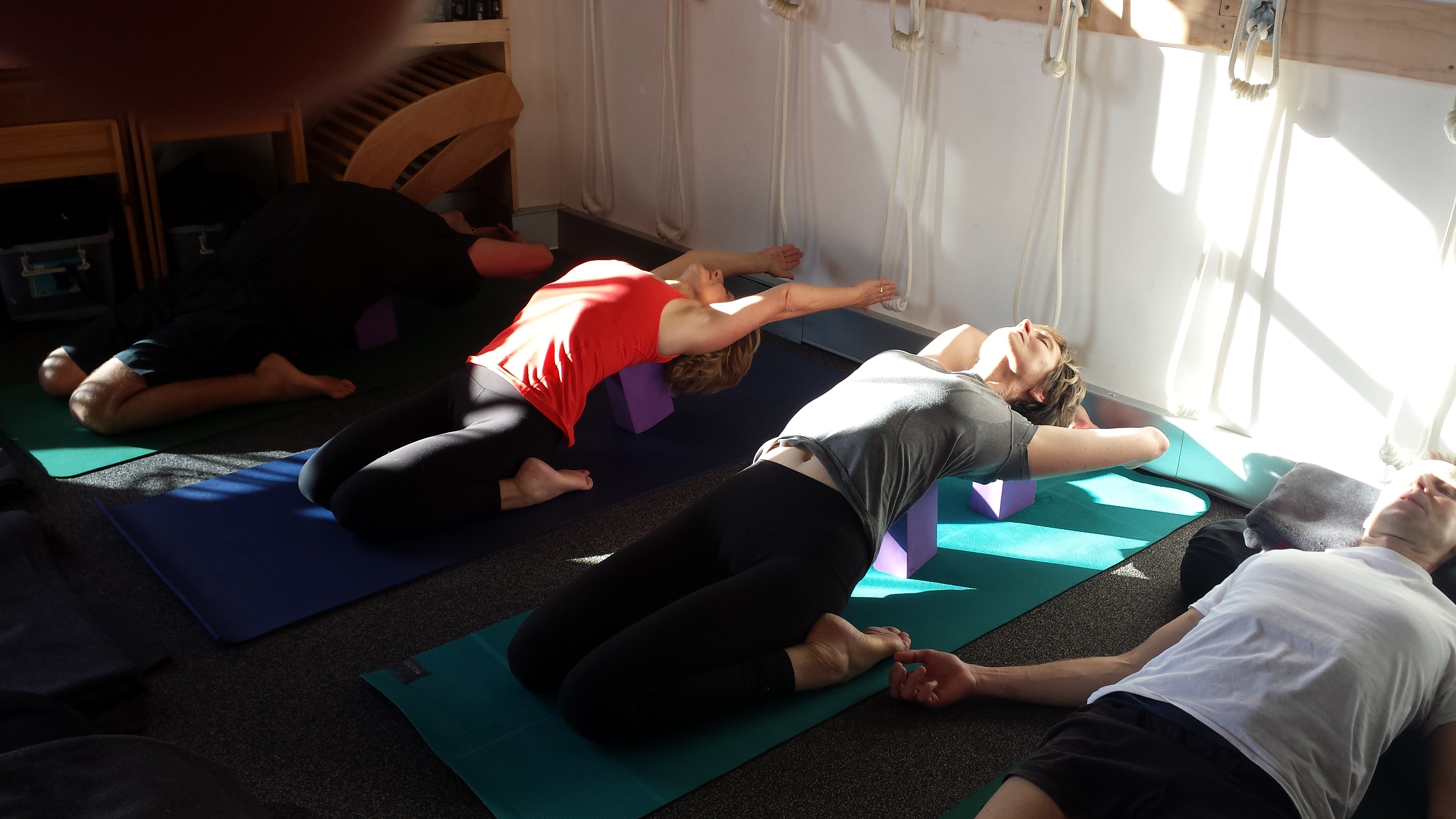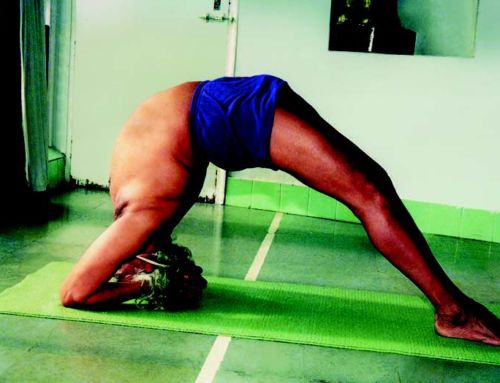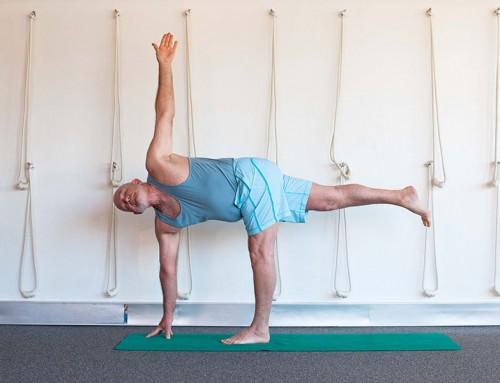Most of us, even the healthiest, spend the majority of our lives sitting at a desk, behind the wheel of a car, or in some other seated forward facing position. We narrow our focus to the small screen directly in front of us, literally or figuratively, then we stand up with the weight of the world on our shoulders. In turn, we begin to round our front body around the space of our heart, creating a distancing from our inner world of feelings and emotions. Our necks sit slightly forward of our spine, our shoulders are chronically tight and often slightly rounded, our back body is overworked and strained, and our hips and legs are tight, and our ease of connection and communication with our innermost Self is muted. Often this stance of defense is not a conscious one, but one that we take as a result of our day-to-day lives. The silver lining around this cloud, though, is that we have a counter pose to this stress and separation that is a result of our daily lifestyle, Supta Virasana (Supine Hero Pose).
Supta Virasana is easily one of the most avoided asanas in western yoga today. Even though B.K.S. Iyengar touts it as incredibly healing for the knees and a curative for flat feet, many find it painful. It is considered an intermediate level asana in fully reclined position, a more intense variation of its milder yet also often avoided foundation pose, Virasana. Virasana is hero pose, a pose meant to emulate courageousness and valor. It elongates and aligns our spine and creates space in our torso, which make it an excellent posture for pranayama and meditation. When we lie back in Supta Virasana, we fully expose and expand our front body. In this way, we “reset” our habitual forward rounding, allowing our courage to lead us into the very exposed space of full openness. In addition to being physically challenging, the emotions that surface as a result of opening our front body in this way can be intense.
Even when we have a strong desire to open our hearts to the world and deepen the connection to our inner Self, years of moving through the world with restriction can create challenge to deep opening physically and emotionally. So we start slowly in approaching this asana by first addressing our ability to open our lower body and become grounded. To begin the practice of Supta Virasana, you must first gain sustained ease in Virasana, which Iyengar says “takes a long time and requires daily practice of the pose for a few minutes for several months.” Once ease in Virasana is gained, then you can begin to recline in the pose, opening the entire front body. In the fullest expression of the pose, the tops of the feet, knees, buttocks, shoulders, back of the head and the arms are all in easeful contact with the floor.
Supta virasana is considered an intermediate supine hip opener. For people with chronically tight deep hip extensors (gluteus maximus and hamstrings), this pose can be especially challenging, but also very helpful when practiced mindfully. In this asana, the legs are in powerful internal rotation with the ankles in extreme plantar flexion. The knees are at there most extreme point of flexion, an experience which can be supported by activating down into the tops of the feet. The shoulders are in abduction. For those who suffer from SI instability, this pose can be an effective way to realign the joints, but when practiced without awareness, it can also result in hyperextension of the lumbar spine. It is important to maintain a strong and supportive core to sustain safety in the lumbar spine as well as the knees and ankles, but to find a balance between the work and the ability to surrender into the experience of the pose.
Because of the extreme front body opening, Supta Virasana can also call up emotions and sensations that have been pushed away or “locked down” by the rounding of the upper back and protective tension in the shoulders. By allowing the body to let go into all of the sensations that arise, you cultivate a willingness to be present with your Self on all levels. If the physical or emotional experiences that you encounter are too intense, you can begin the practice of this pose by supporting the sitting bones and base of the spine on a block or blanket and recline onto the support of a firm bolster.
Approach Supta Virasana with an openness to what arises and with compassion and sensitivity, and you will begin to counter your daily onslaught of stress and strain with an experience of expansion and release. In doing so, you will simultaneously create more space for your breath to support you, more length on your spine, and slowly but surely an open heart.
by Kelly Golden
from Yoga basics





Leave A Comment